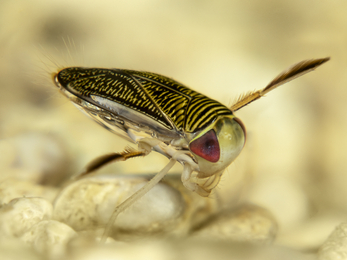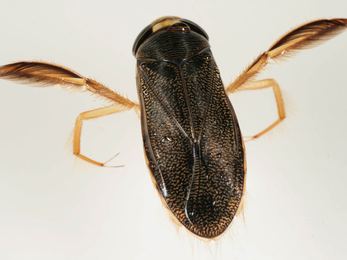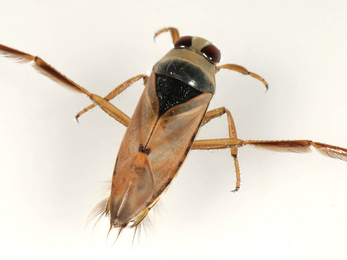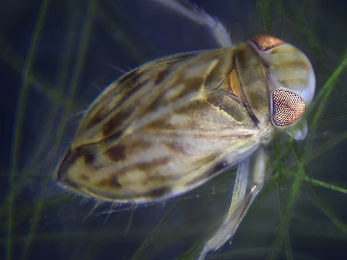In the margins and meanders of our chalk streams, where there is a slower flow, amazing insects swim across the surface. Lesser water boatmen may be small – up to 1.5cm long – but their unique characteristics make them a memorable sighting. There are actually several species in their family (Corixidae), and while they are hard to tell apart with the naked eye, their common features can help you to spot them. When you next visit a chalk stream, keep an eye out for these fascinating animals!
Pictured below from left to right (click to expand): Lesser water boatman from the side, with its air bubble visible / lesser water boatman from above.





